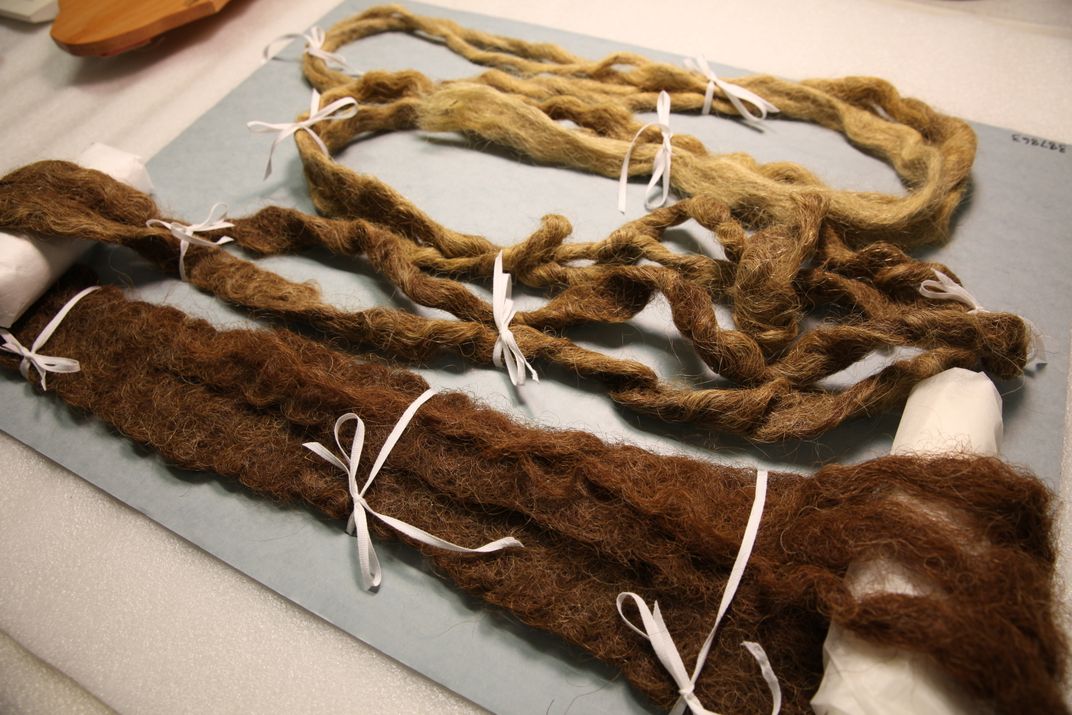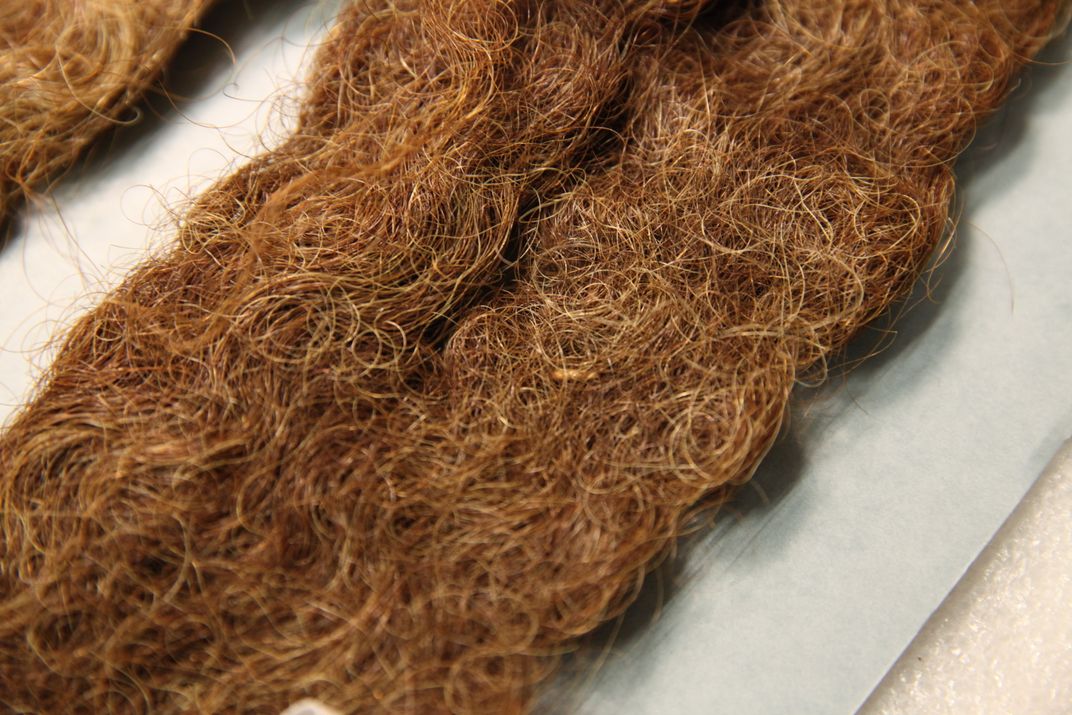The World’s Longest Beard Is One Of The Smithsonian’s Strangest Artifacts
Kept in storage at the National Museum of Natural History, the world’s longest beard measures over 17 feet in length
:focal(977x367:978x368)/https://tf-cmsv2-smithsonianmag-media.s3.amazonaws.com/filer/32/ac/32ac7c6b-d765-4995-928a-45797c6e573c/smithsonian_beard_held.jpg)
When Hans Langseth died in North Dakota in 1927, he left his surviving children with a final wish: after his open-casket funeral, he wanted to have his beard cut off and stored for posterity. His son acquiesced, lopping off his father's beard before the casket was buried. The beard sat tucked away, boxed in an attic, for decades, before Langseth's son Russell donated the beard to the Smithsonian—which turns out to be a perfectly reasonable place for the beard to be kept, because according to the Guinness Book of World Records, Hans Langseth's beard is the longest beard in the world, a staggering 17 feet 6 inches long.

Langseth was born in Norway in 1846, but immigrated to the United States as a young man, settling with his wife in Kensett, Iowa. According to physical and forensic anthropologist Dr. David Hunt, Langseth began growing his prodigious bristles when he was just 19 years old to compete in a local beard-growing competition. After the competition ended, Langseth simply continued the effort. Though beard hair can only grow about four or five feet before dying off, Langseth matted the dead hair together in a coil, like that of today's dreadlocks, to further lengthen and strengthen his beard. The beard itself, says Hunt, acts as a kind of timeline for Langseth's life—the brown parts represent his youthful hair color and lifestyle (wheat kernels, from the harvests on the farm where he lived as a young man, can still be seen flecked throughout the beard) while the yellowed parts represent Langseth's beard in his older years.

"You’d have to be a little eccentric to do this," Hunt says, explaining how Langseth would roll his beard around a corncob and carry it in a pouch around his neck or tucked into a clothing pocket. In his older years, Hunt says, Langseth toured the country as part of a sideshow exhibition, but quit because he tired of people pulling on his beard, claiming it to be fake. "But according to family members, he did like it when the Fat Lady washed his beard."
In 1922, at a celebration meant to spur economic growth in Sacramento, California, Langseth's beard was officially dubbed the longest beard in the country, after entering a nationwide search held by a group of Sacramento beard-growers known as the Whiskerinos. At the time of measurement, Langseth' beard measured 17-feet long; the second-place beard, grown by Zach Wilcox from Carson City, Nevada, measured a mere 12-feet.

The beard was displayed as part of the museum's physical anthropology exhibit from 1967 to 1991. Today, it is kept in storage, though it gets brought out once or twice a year when Langseth's descendants stop by to examine their ancestor's lengthy whiskers. So why is the beard housed at a museum dedicated to natural history, as opposed to say, American history, which preserves samples locks of hair clipped from a number of U. S. presidents within its collections? Research, says Hunt. The museum houses a number of human body artifacts—from bones to teeth—for scientific analysis. By testing hair, researchers can paint a surprisingly vivid picture of what life was like for a person, from their diets to illness to pollutants that they might have been exposed to. While Langseth's beard has never undergone such tests, keeping it on hand remains an important part of the museum's mission. Plus, it's a worthy boast, being home to the Hope Diamond and the world's longest beard.
/https://tf-cmsv2-smithsonianmag-media.s3.amazonaws.com/accounts/headshot/natasha-geiling-240.jpg)
/https://tf-cmsv2-smithsonianmag-media.s3.amazonaws.com/accounts/headshot/natasha-geiling-240.jpg)